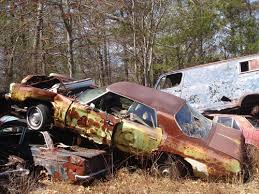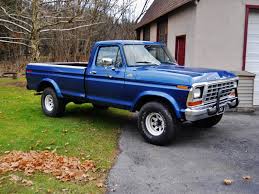Hi, Tommy from
Iron Mountain Iron & Equipment, llc here to enlighten you on the benefits of a new
Flatbed Body for that used or new pickup or commercial truck in your driveway.
First, let's start by saying that the pickup truck is obviously a well know item to most of us as being the tool of choice for countless businesses, vocations, and private owners down to the individual wanting one for personal use. Henry Ford captured that fantasy quite well back at the turn of the century with the Model T pickup, and obviously the concept has continued to grow slightly since it's inception.
For many, life without a pickup truck would be impossible. Just the slightest little task such as going to the lumber yard becomes daunting, without the cargo carrying capabilities of a truck of some sorts.

See what I'm getting at here??? lol. (This guy's in dire need of a pickup no doubt.)
The basic pickup truck bed is very stylish, useful, and has been the norm for many years. Within the past few decades however, the
FLATBED body has seen a huge increase in presence due to demand for higher capacity payloads, or a more utilitarian useage for everything from farm work to oil field transportation. In the heartland of this great country, chances are you'll see a higher ratio of flatbeds on trucks than the OEM (origional equipment manufacturer's) beds for commercial work than anything. That phenomenon has spread to all 4 corners of the country, and for good reasons.
#1; Ease of use for commercial workers to carry, reach into, and load to capacity.
#2; Durability. Flatbeds are much more ruggedly constructed than a factory pickup truck bed.
#3; Cargo space. Much more room on a flatbed, boasting on average of 56 square feet based on an 8'L X 7'W floorspace as opposed to the standard 8' pickup bed with lost space for the wheel wells at approximately 32 square feet.
#4; Resale value. Selling a used truck in the commercial market especially, maintains a higher resale value over a standard pickup truck.
#5; Longevity. Steel flatbeds generally (if built of quality materials) will outlast a pickup bed extensively for years to come, even in the harsher climates of the country due to thicker steel used in the costruction of them.
With that said, let's touch upon the materials used in building a flatbed compared to a pickup truck bed.
Pickup beds are mass produced with thin gauge sheet metal, highly prone to rusting out prematurely from the harsh chemical treatments used in wintertime on the highways to control slippery surface conditions. We all would love to have our vehicles last forever considering the prices of them, but as Merle Haggard once said in song, "I wish a Ford and a Chevy would still last 10 years like they should..." That not being the case especially in the northern regions of the good 'ol US of A such as Vermont, New Hampshire, Maine, etc., without continuous maintanence and proper undercarriage washes to try and remove the salt and calcium chloride products sprayed up underneath them constantly...it's kind of a losing battle. We all know too well the sinking feeling we get when we discover the beginning stages of body rust around wheel wells, rocker panels, etc., and have about 24 more payments left to go.
Here in Vermont, we have a saving grace of a process known as "oiling", or oil undercoating. There are a couple of EPA approved treaters in the state that use NEW motor or hydraulic oil, heated to approximately 100 degrees F, and spray it under pressure, atomizing the oil, applying it to the underneath of the vehicle in strategically placed drilled holes that they later plug with rubber plugs after drilling. This process GREATLY prolongs the life of a vehicle in simple terms. I know of several vehicles having been treated once a year for the past 40 years that look like they just came from the showroom. But you have to be dilligent about getting this done or it's useless. The process is incredibly affordable, at around $120.00/year. A cheap insurance policy indeed.

It's simple....Either THIS,

Or THIS...
Getting back on course about FLATBEDS again, the construction of them again is critical. Some mass produced flatbeds have the same characteristics as an OEM pickup bed in that they are built of FORMED steel mainframes, or thin gauge steel components that are put in a machine and pressed into a shape to form a "C" beam or channel to use as crossmembers, main long sills, etc. This process is cheaper and creates a lot of parts a lot quicker, but the end result is usually an inferior quality product as the structural integrity is indeed not as durable as a structural-steel built mainframe. Structural steel can be defined as "steel that is manufactured to a specific dimension by heating, forging, etc. at a steel mill..." This material no doubt is far stronger and expected to last much longer than "formed" components in a body structure. Not to mention the thickness which will again, outlast thinner materials.


If a pickup truck is indeed you're vehicle of choice, and you're proud of it as most of us are, then maybe it's time to think about removing the OEM bed and installing a new
Cadet Flatbed body from
Iron Mountain Iron & Equipment, LLC. It's simple to do too. You can go to the website:
(
http://www.ironmountainiron.com),
IRON MOUNTAIN IRON.com
or to our favorite online auction site,
(
http://www.onlineauction.com/index.php)
OnlineAuctions.com
and view all the things there too, while you're at it.
Remember...it's either this with 24 more payments to go...

or THIS well after you've paid off your investment...
Thanks in advance for taking the time to read our blog. Hopefully your eyes didn't glaze over within the first few sentences...
Iron Mountain Iron & Equipment, LLC
9271 Molly Stark Trail
Woodford, Vermont 05201
(802) 375-3061
OPEN 24/7 online.
Dedicated to serving the hard working folks that are interested in purchasing a new steel flatbed body with old fashioned, family-oriented service like we would expect to get ourselves. It's not difficult, it's NATURAL.
We offer
FREE delivery of these
Cadet bodies within 100 miles of our location. Give us a call, or email anytime of the day or night. We'll get right back to you ASAP.




















